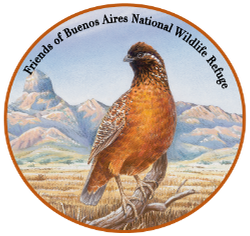Among Friends 17 March 2021 Wood Ducks
by Walt Anderson
OK, I admit it. I’m a Duck Fan (Go Oregon!). But when it comes down to choosing favorites, the colorful, extravagant Wood Duck ranks right up there. These beautiful birds are not common in Arizona; in fact, the Breeding Bird Atlas published in 2005 only had nesting records from Yavapai County, specifically in Prescott and the Verde Valley. In the last couple years, they have nested at the Buenos Aires National Wildlife Refuge at Honnas Pond, which is good news, but climate change is predicted to impact them severely as Arizona’s few wetlands may not have enough water to support them.
In addition to the breeders at Honnas Pond, the refuge has had records from late October through March. It will be interesting to see if the birds fledged from Honnas Pond will return to breed around the refuge in the future. They are pairing off now in the state.
These are omnivorous ducks, eating invertebrates, fruits like acorns, and aquatic plants. The birds nest in tree cavities and in nest boxes, and nationwide, they have made a pretty dramatic comeback from their population lows in the early 20 th century, when they came perilously close to extinction.
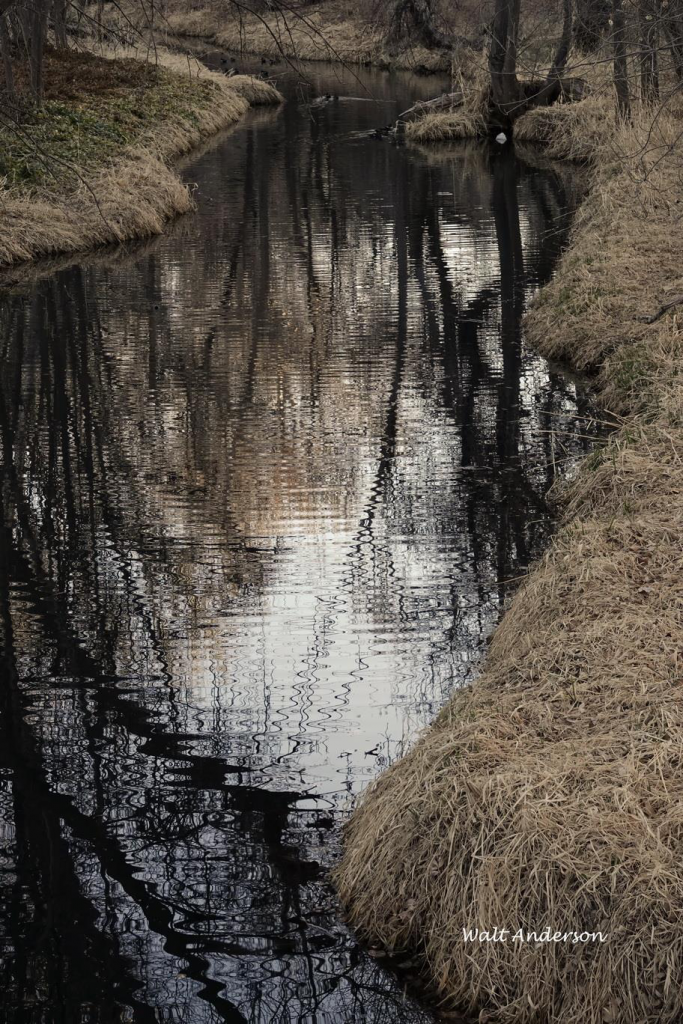
There are Wood Ducks “up the creek” in this shot. What made this image special to me was the ripples in the water and the textures of the dry grasses along the stream.
∙∙∙
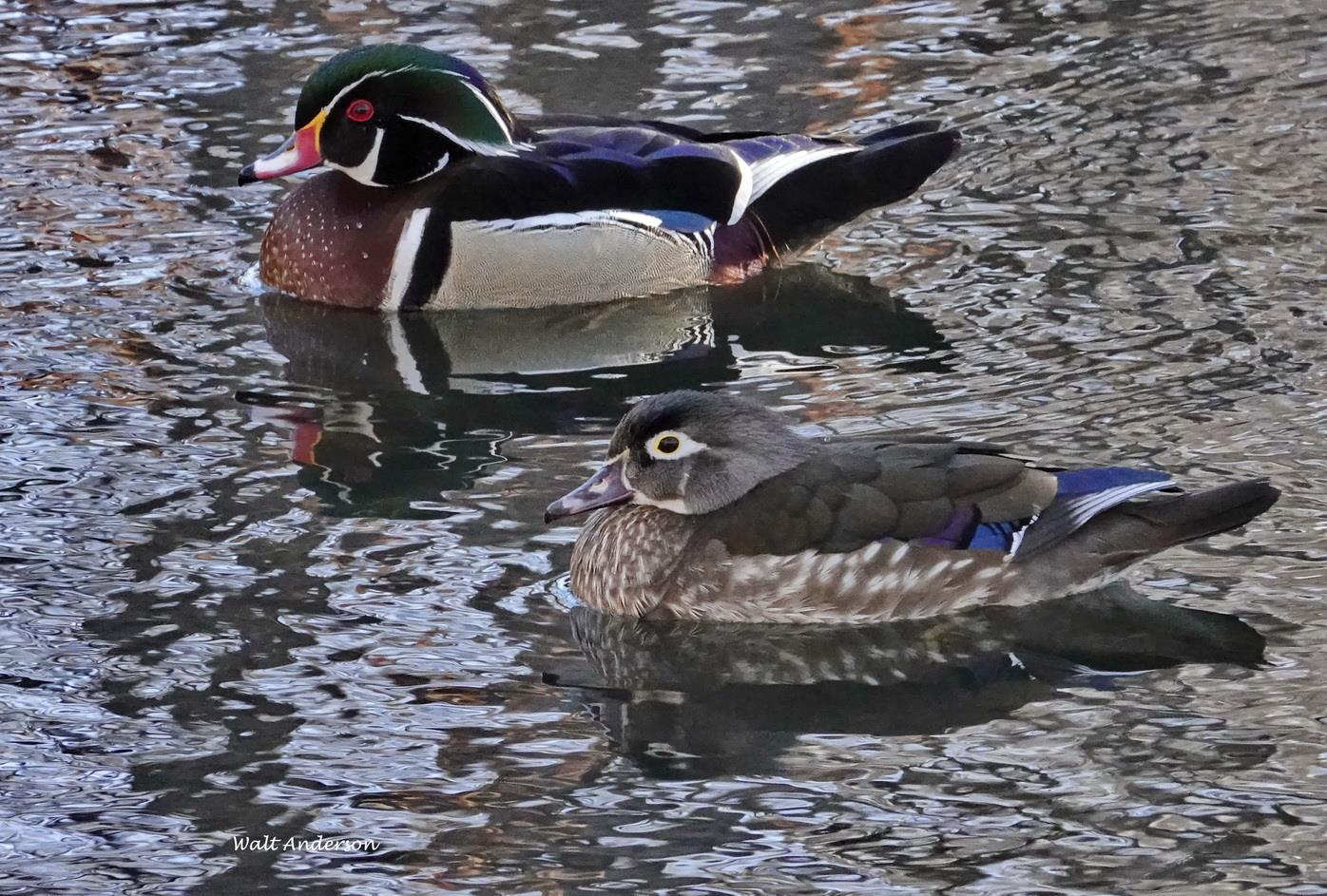
While the male often gets raves for his stunning plumage, I am equally attracted to the more subtle but elegant patterns of the female. This species’ closest relative is the equally flamboyant Mandarin Duck of Asia. One showed up recently as a one-day wonder in Prescott Valley. Its origin is likely from a captive collection, though a feral population is now known in California.
∙∙∙
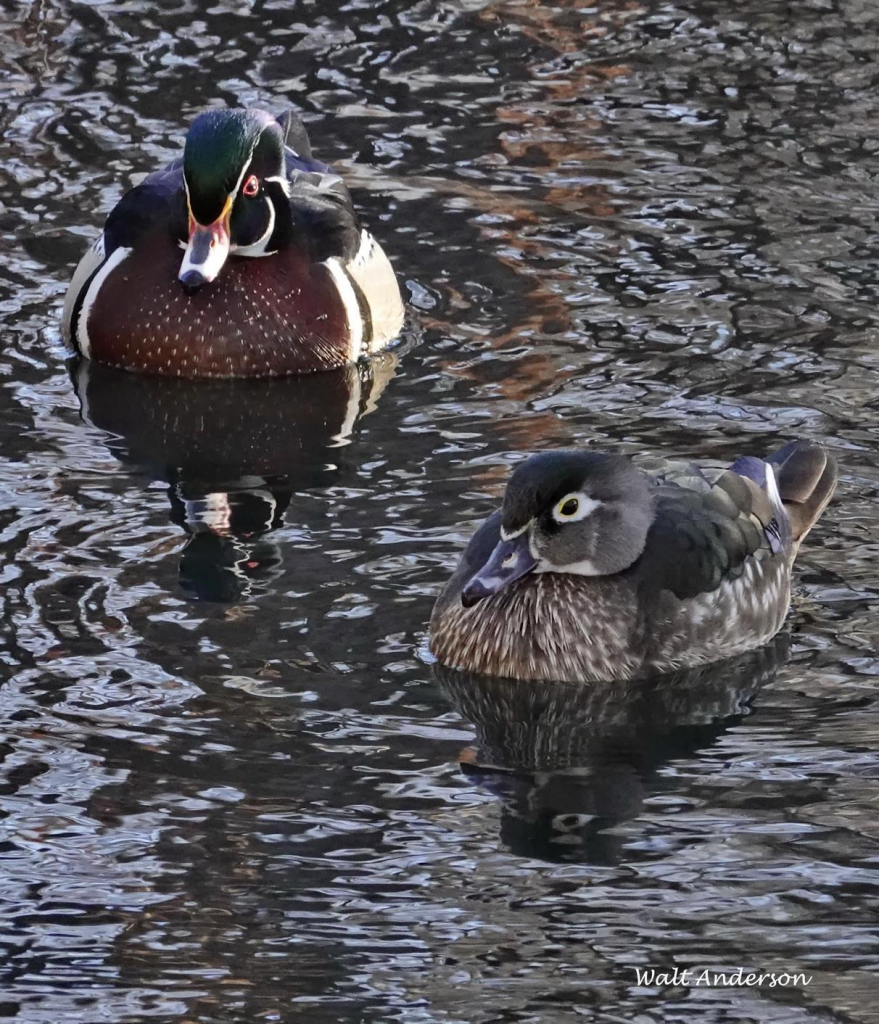
I have hundreds of photos of wild Wood Ducks, but what especially pleases me about this one is the water patterns.
∙∙∙
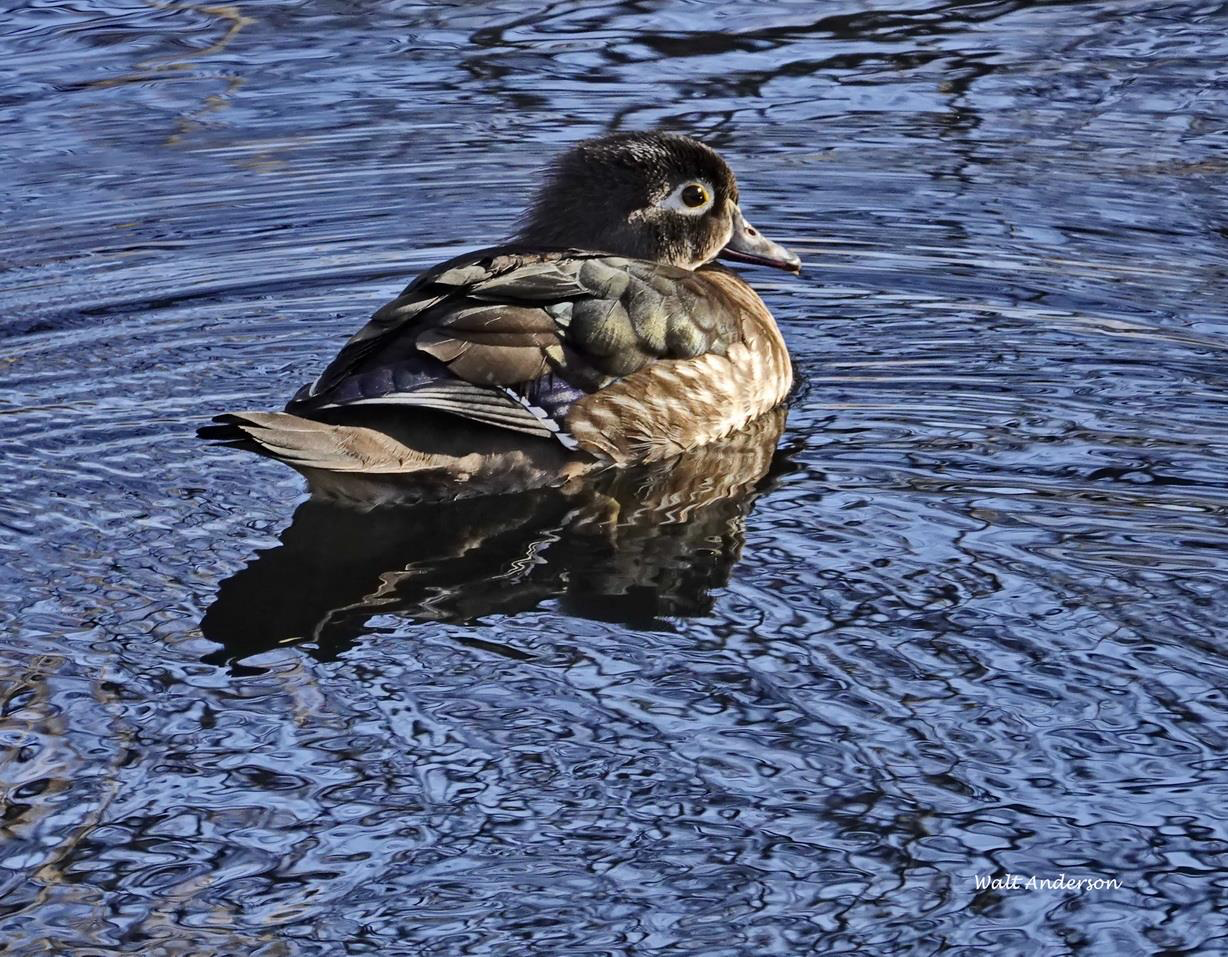
I have painted Wood Ducks three times and want to do it again, but this water pattern would require the exceptional skill of someone like Carel Brest van Kempen, an extraordinary artist from Salt Lake City. I just love these blues!
∙∙∙
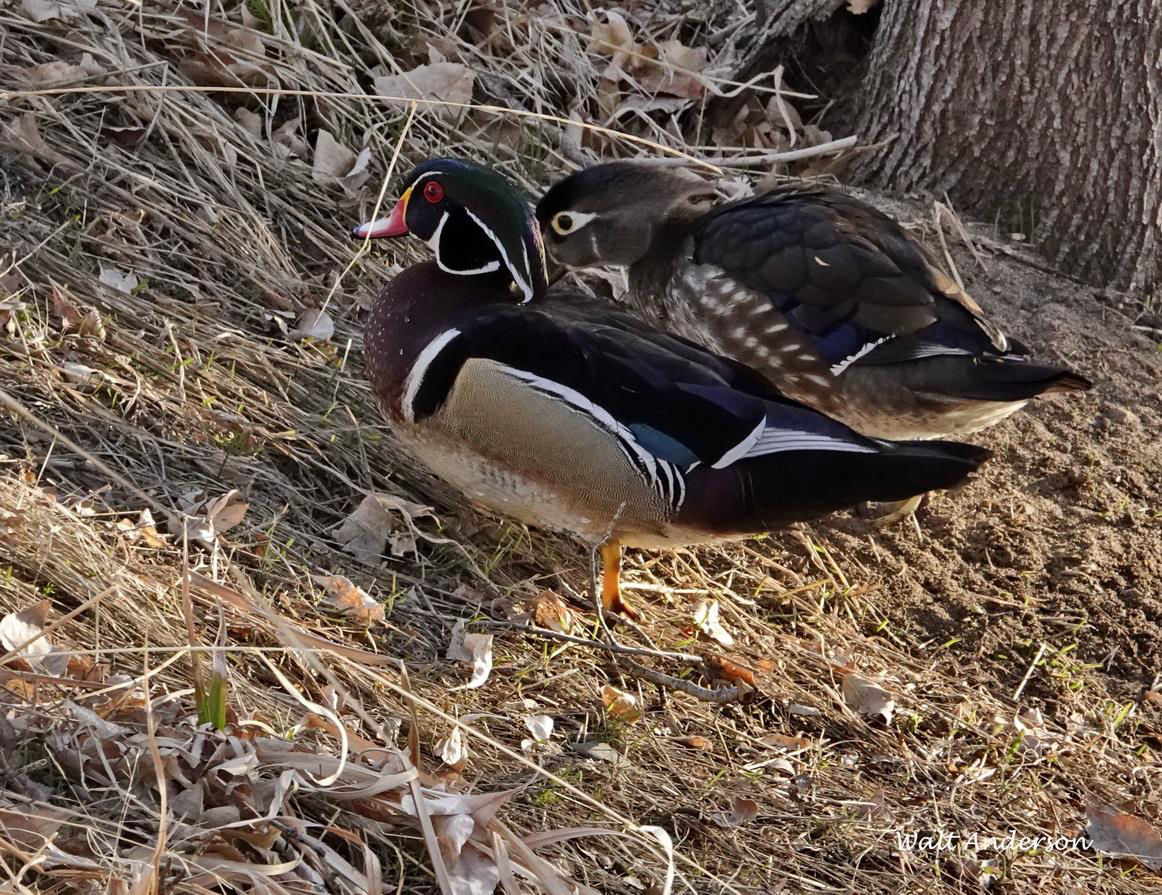
Here a pair of Wood Ducks has climbed up the bank to find edibles in the grass under the cottonwoods.
∙∙∙
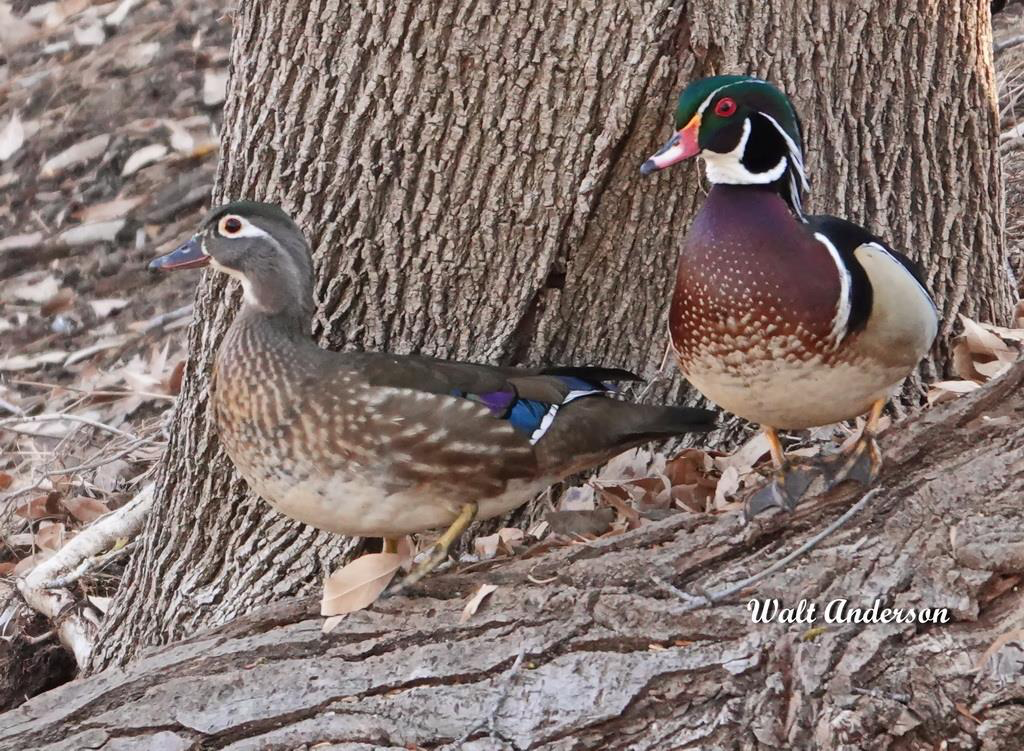
And here is a handsome pair at the base of a Velvet Ash.
∙∙∙
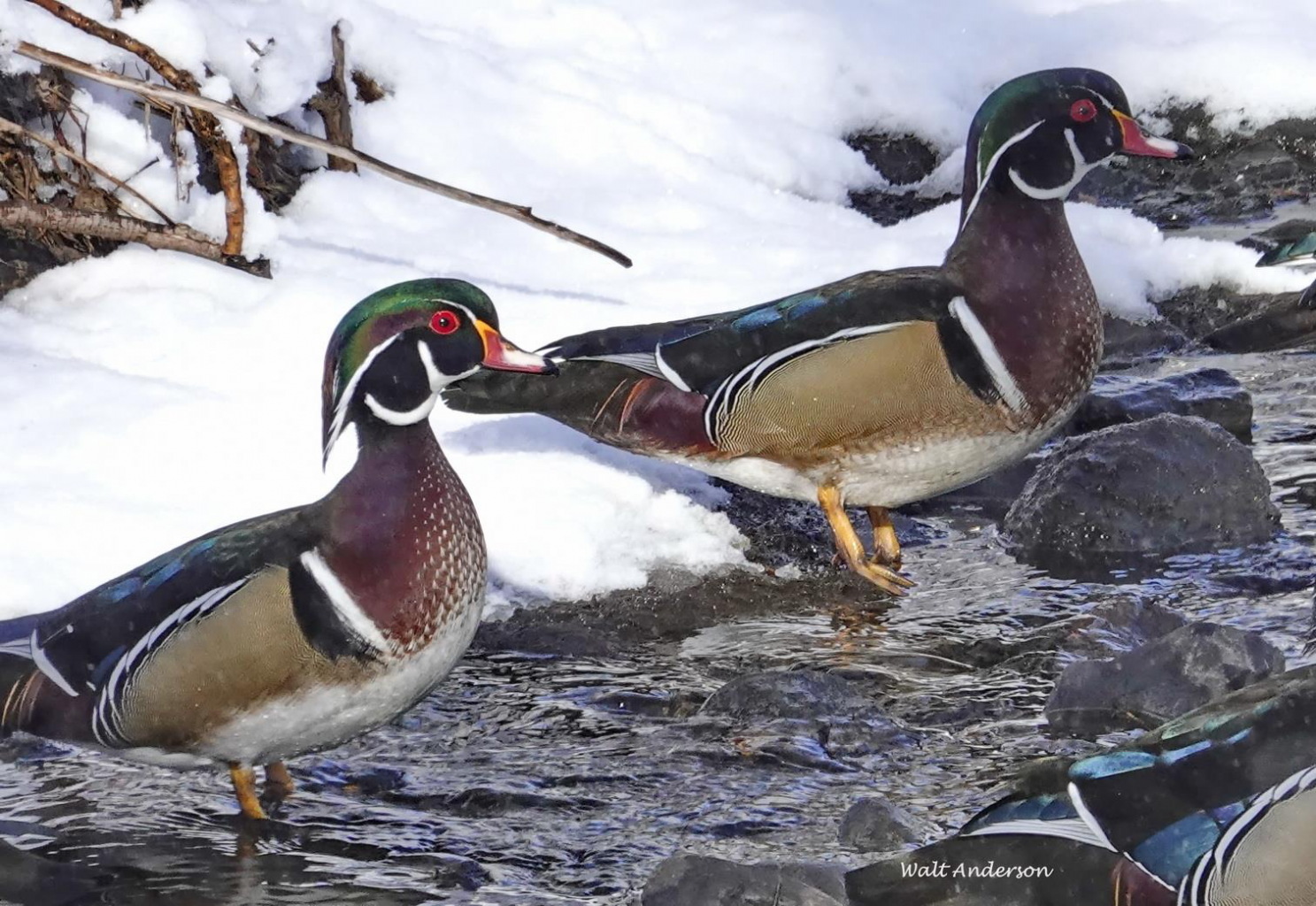
Snowy weather can conceal food items for these birds, but fortunately, snow rarely persists long, and the birds are highly mobile (can fly at 30 mph), so they find a way.
